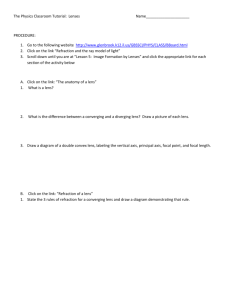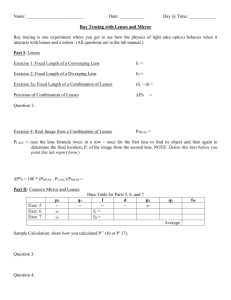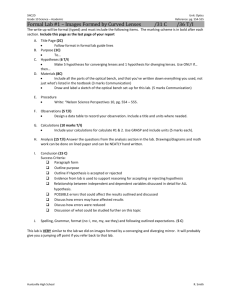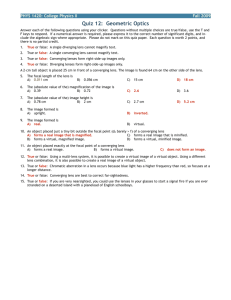Images in Diverging Lenses
advertisement
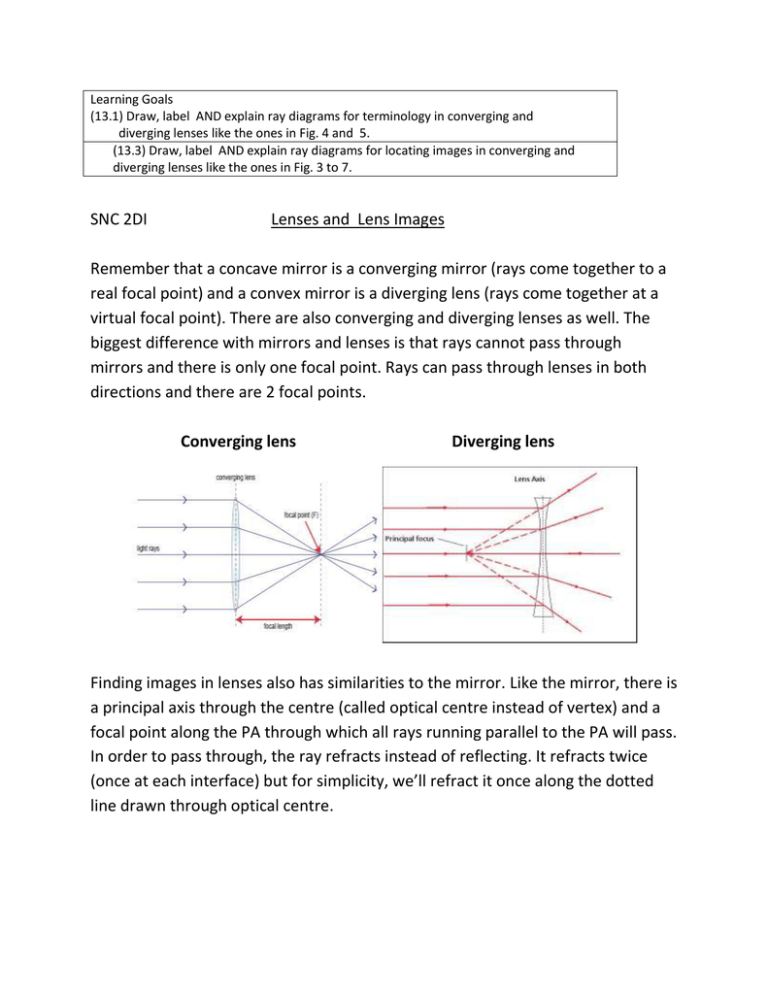
Learning Goals (13.1) Draw, label AND explain ray diagrams for terminology in converging and diverging lenses like the ones in Fig. 4 and 5. (13.3) Draw, label AND explain ray diagrams for locating images in converging and diverging lenses like the ones in Fig. 3 to 7. SNC 2DI Lenses and Lens Images Remember that a concave mirror is a converging mirror (rays come together to a real focal point) and a convex mirror is a diverging lens (rays come together at a virtual focal point). There are also converging and diverging lenses as well. The biggest difference with mirrors and lenses is that rays cannot pass through mirrors and there is only one focal point. Rays can pass through lenses in both directions and there are 2 focal points. Converging lens Diverging lens Finding images in lenses also has similarities to the mirror. Like the mirror, there is a principal axis through the centre (called optical centre instead of vertex) and a focal point along the PA through which all rays running parallel to the PA will pass. In order to pass through, the ray refracts instead of reflecting. It refracts twice (once at each interface) but for simplicity, we’ll refract it once along the dotted line drawn through optical centre. Images in Converging Lenses Three imaging rules are shown in the above diagram. Note that the image formed is always real and always inverted. It’s size and location, however, depend on the objects position. See Figure 3 on page 558 for details. Images in Diverging Lenses The imaging rules for diverging lenses are similar to converging lenses. Only this time the image formed is ALWAYS smaller, upright, same side as the object and virtual.

